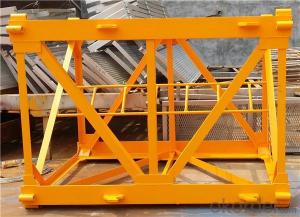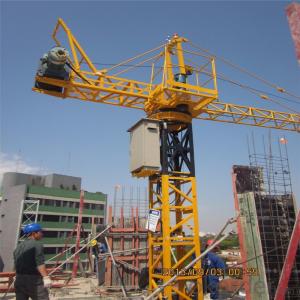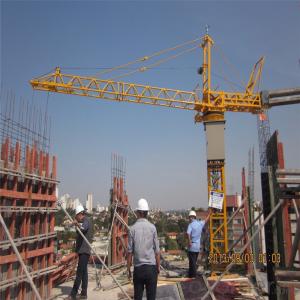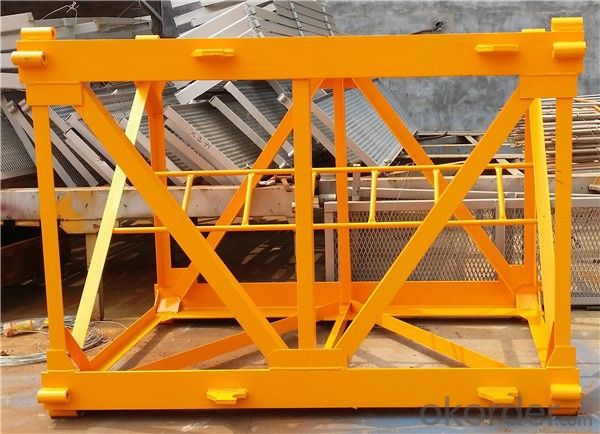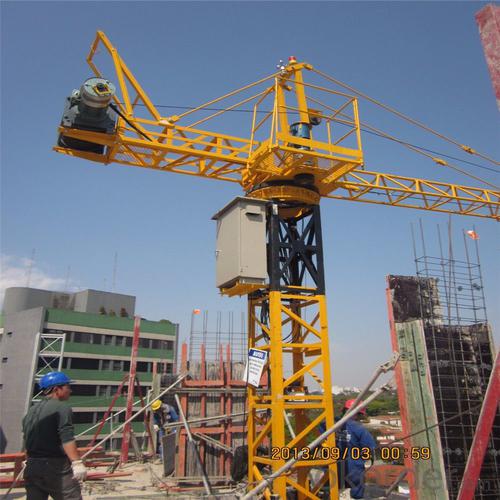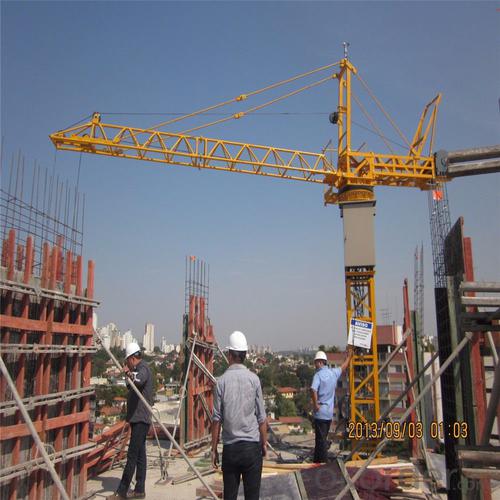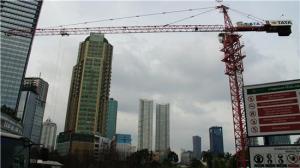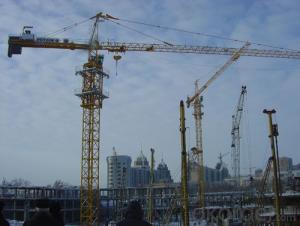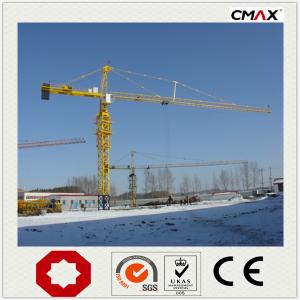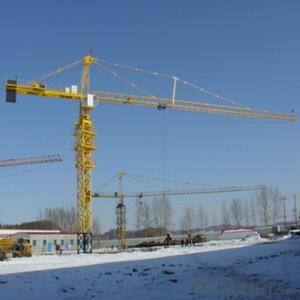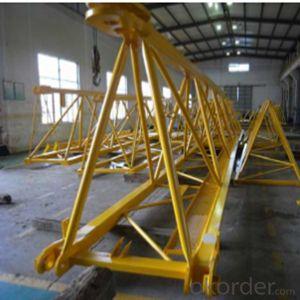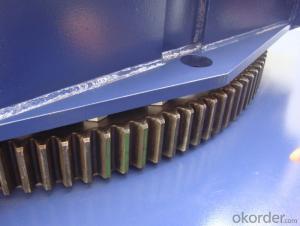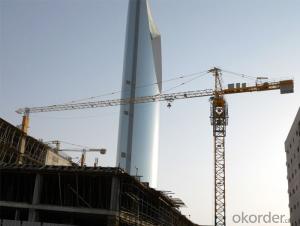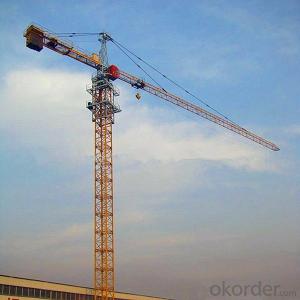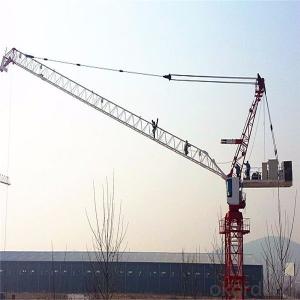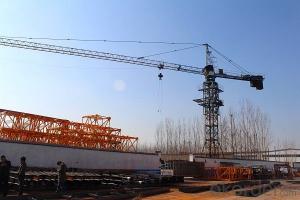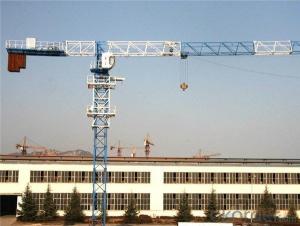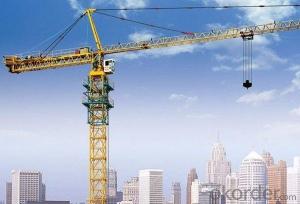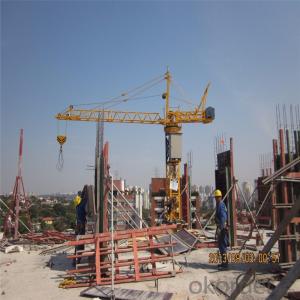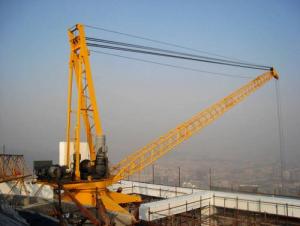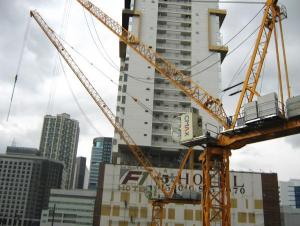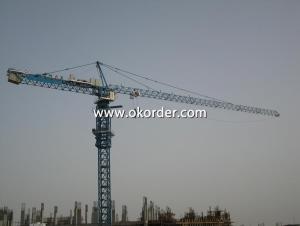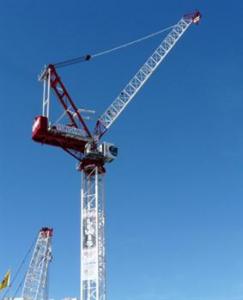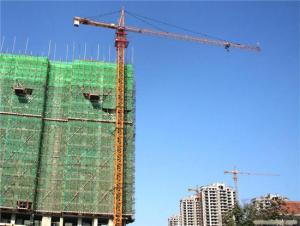Tower Crane of Jing Kui Model Number QTZ80(6010)
- Loading Port:
- Qingdao
- Payment Terms:
- TT OR LC
- Min Order Qty:
- 1 unit
- Supply Capability:
- 15 unit/month
OKorder Service Pledge
OKorder Financial Service
You Might Also Like
QTZ80(6010) Description
Feature: Tower Crane
Condition: New
Rated Loading Capacity: 8
Rated Lifting Moment: 800
Max. Lifting Load: 8
Max. Lifting Height: 150
Span: 60
Place of Origin: China (Mainland)
Brand Name: JINKUI
Model Number: QTZ80(6010)
Warranty: one year
After-sales Service Provided: Engineers available to service machinery overseas
Certification: ISO9001:2000; CE;Ukraine & Belarus Certificate
Colour: Orange/ Yellow
QTZ80(6010) Features
1.Thirteen years of experience in supplying new self-erecting tower crane with Huiyou Brand.
2. Export to more than 20 countries with CE/ISO/GOST Certificates.
3. Stationary/Travelling, external/ internal climbing tower crane
4. Impeller blasting/rust protection paint
5. Advanced painting process
6. Potain masts designed with dismountable panels, making teansport easier and cheaper.
7. New designed mast, can be used to Internal and external climbing tower crane
8. Famous brand mechanism system, Schneider Electronic control system, jiangte and jiuhe motor
9. Engineers available to service machinery overseas.
QTZ80(6010) Specification
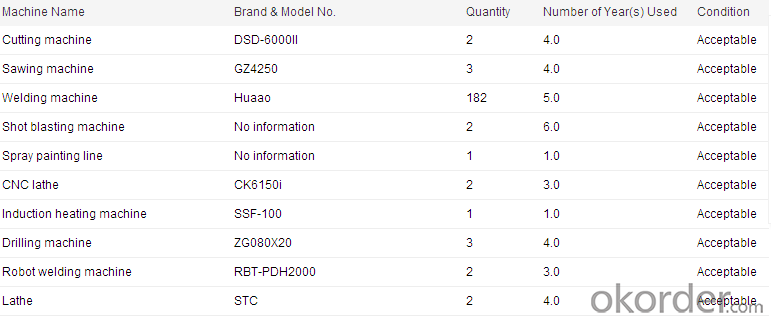
QTZ80(6010) Pictures
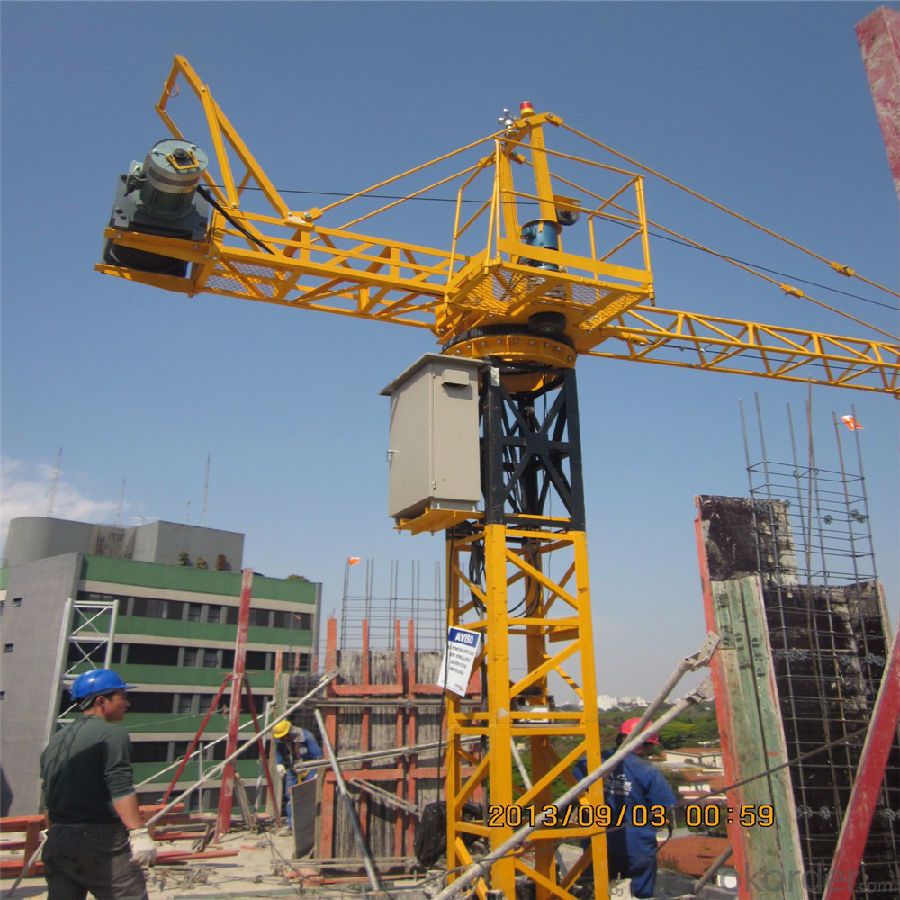
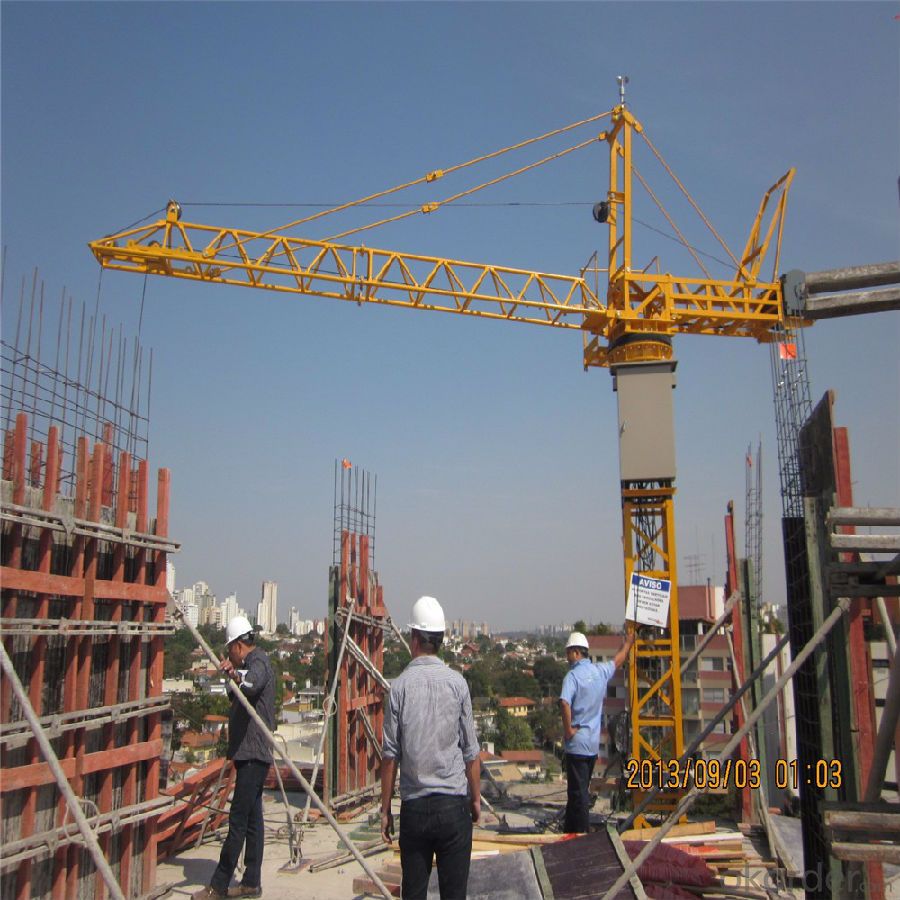
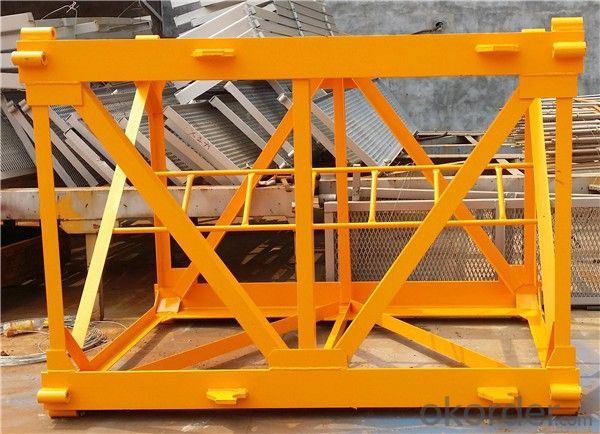
QTZ80(6010) FAQ
Q: What is the function of the monitor?
A: Monitor, namely inspection system (like black box), which could store 10000 tower crane operation reports, and it is recommended to be installed in big cranes more than 16t.
Q: What is 3 main mechanism of the tower crane?
A: there are trolleying mechanism/ slewing mechanism/ hoisting mechanism.
Q: Can you equip with light on tower crane jib, monitor, remote control and anemometer?
A: Sure. All of these could be provided with extra cost upon the clients’ requirements. But according to general practice, remote control is not suggested because most of the operator feedback operation in the cabin will provide a wide working view.
- Q: What is the function of the balance valve in the hydraulic jacking system of tower crane?
- The function of the balance valve is to maintain the balance of the oil pressure, the hydraulic oil delivery flow is stable, so that the tower crane jacket and the upper part of the lift, disassembly, standard time, lift and smooth.
- Q: How can you tell the difference between a mosquito and a crane fly?
- Crane flies are about an inch long, sometimes larger - just the body, not including the legs.
- Q: A solid answer and links would be nice.Your help and/or attempts to help are appreciated
- It's actually a POST WWII story: Sadako Sasaki, a Japanese girl who developed leukemia at age eleven as a result of exposure to atomic radiation when she was two years old, began folding paper cranes in observance of a Japanese belief that the gods will grant a wish to anyone who folds 1000 cranes. Although she died a year later, her friends took up the mission, and the paper crane has become a symbol of the hope for world peace. The site below tells the story far more movingly than this summary.
- Q: how many different types of cranes and winches are there?
- A bit more information might help. In England there are Winches and then there are winches. As for Cranes are we talking about birds.........actually there are only a few type of each.......but there can be quite a few variations of the basic types. let's say 6 types of cranes and 4 or 5 winches.
- Q: my father is owning a crane manufacturing business I hav given my ssc wat should I study after ssc IT, mechanical engg., design engg. and others (plz. specify) ?
- Without being too critical, the first thing you need to do is improve your English so that you will be a huge help in the company whether in engineering or sales. Cranes require lots of engineering in weight handling (mechanical), automation and controls including instrumentation (electrical) and a tertiary field in engineering is in stopping and starting (clutches and brakes) which can be mechanical or hydraulic engineering. A new filed is metalurgy which is concerned with the way metals perform (stress), lighter,stronger, etc. Take your choice. Mpho
- Q: please be specific! thank u so much
- with the help of a methods the Oreo. there is extra ideas Double Stuf, the frosting is colored for the vacation journeys, Cakesters and Golden. they are ultimate dipped in a tall glass of milk and that i trust they actually have them in straw kinds now. Plus, you may pull them aside and lick the filling, you won't be able to attempt this with an Chips Ahoy.
- Q: Has anyone actually folded 1000 paper cranes? i want some proof
- no and no proof
- Q: do they eat them or what??i hear about hunting them and i think cool but what do you do with them i mean do they tast good??
- We okorder /
- Q: Tower crane body standard section connection bolt screw upward or downward, why?.
- Up or down, there is no change in the firm torque of the connecting bolt. Simply choose to go up or down for convenience. Generally no special requirements, it is recommended that the thread upward, so that it is not easy to rust.
- Q: I am kinda really sick of paper cranes, and I was wondering if there's any good method of making paper birds that look, well, like birds. I checked out the one website with instructions, but, well, look at it. I tried it.
- I haven't made the other birds on this site but they have a pelican and an owl. I think the pelican looks a bit crane-ish but it may look different in reality. Have fun!
Send your message to us
Tower Crane of Jing Kui Model Number QTZ80(6010)
- Loading Port:
- Qingdao
- Payment Terms:
- TT OR LC
- Min Order Qty:
- 1 unit
- Supply Capability:
- 15 unit/month
OKorder Service Pledge
OKorder Financial Service
Similar products
Hot products
Hot Searches
Related keywords
